|
As it first appeared published in "Harlot's Sauce" June 29th, 2010 After the birth of my son in 2007, I felt an incredible energy and drive to make art. Contrary to the popular belief that art-making is one of the things that fall to the wayside after the birth of children, I felt not just inspired but compelled by my experience of childbirth and motherhood. The creative act of making another human being awoke a creative drive in me. I also found that the time limitations involved in caring for an infant forced me to be more disciplined, eking out an hour here and there when my son was sleeping to continue my portraits. After my daughter’s birth in 2008, I embarked on a series of mother and child portraits accompanied by birth stories written by each subject. I wanted to simultaneously express the imperfection and fallibility of the mothers and capture an element of the divine in the mother/child bond. Each mother in the series shares her birth story—life-changing, beautiful, or harrowing—and these experiences unify a very diverse group with a common theme: love, self sacrifice and transcendence. The inspiration for this project is my children: their beauty, their challenges and the unique and universal bond of motherhood. 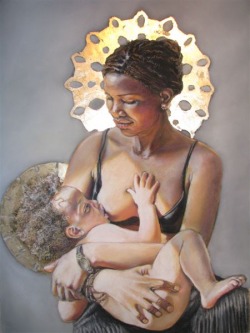 Each portrait is done in ‘conte crayon’ (semi hard pastel,) accented with a gold leaf halo in an echo of portraits of the Virgin Mary with child (Madonna Lactans) from the 15th century, as well as an early 20th century revival of the practice by such artists as William Adolphe Bouguereau. Working out the process of creating the haloes was complicated. I outlined the circular shapes and filled them in with the leaf in the first four portraits, then devised a way to make a pattern in the halo with “Gladys and Elizabeth.” I was thinking of rose windows, and wracking my brain for a way to make such an even pattern by hand with my limited math skills. Unable to think of anything, I set the problem aside and started cutting out snowflakes with my son instead. Then it occurred to me to cut an elaborate snowflake and use the radiating design for the halo. I outlined a snowflake pattern on each halo and painted the gold leaf sizing on to the ground of the pattern, but not the holes, waited for the sizing to dry, and then rubbed the un-sized leaf off to reveal the pattern. Three of my portraits are of mothers breastfeeding their babies. These modern Madonnas Lactans are a true celebration of motherhood. Breastfeeding can be a challenge. Many women did not witness their mothers breastfeeding and are unsure of how to do it correctly, and many are unnerved by the social stigma surrounding breastfeeding in public. The simple act of successfully breastfeeding their babies is a true victory. For me, there is an aura of joy, bliss and awe surrounding a breastfeeding mother, as she seems to embody the fundamental divinity of motherhood, the Gaia and the Virgin Mary. I personally find breastfeeding mothers so beautiful and pure that I was unprepared for the reaction my portraits generated when I posted them on the popular networking website Facebook. I posted one on a figurative artists group on Facebook, and was surprised to see that it had been removed on March 27th, 2010, just a few days later. I had already posted two more portraits, so I went ahead and reposted the one in question, thinking it must have been a glitch. My new artwork was removed on March 28th, and then on March 29th the re-posted portrait was removed as well. I reposted all three in a row, as a kind of experiment, and received the following letter by email: 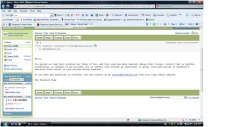 Hello, You posted an item that violated our Terms of Use, and this item has been removed. Among other things, content that is hateful, threatening, or obscene is not allowed, nor is content that attacks an individual or group. Continued misuse of Facebook’s features could result in your account being disabled. If you have any questions or concerns, you can contact us at [email protected] from your login email address. The Facebook Team I went to the local CBC radio station, and was featured on the CBC Radio One morning show “On The Island” with Gregor Craigie, (go to April 9th podcast, I'm at about 7:38 in the program.) After that, the story took on a life of its own. It was covered by various CBC broadcasts, a CBC television news program in Saskatoon, CBC Radio One’s “The Story from Here,” with Sheila Coles, (listen to part two of June 23rd 2010,) CHEK-TV News in Victoria, two talk radio shows in Toronto and Montreal, the front page of the local Comox Valley Record and an article by Antonia Zerbisias in the Toronto Star. I believe that Facebook’s treatment of my breastfeeding portraits is indicative of the brutally high expectations that society holds for mothers. Mothers are expected to breastfeed, every health organization tells us it’s the best choice, yet images of women breastfeeding are labelled obscene and mothers are treated with hostility and disdain when breastfeeding in public. The result is an ideal of motherhood that no mother could possibly meet: scolded if we don’t nourish our babies exactly the way they tell us to, shamed if we dare to do it in public or celebrate and honour the unique bond it creates. A common theme throughout many of the birth stories was a sense of inadequacy. Many women felt they had not lived up to their ideal of what a mother should be, what a birth should be. There was often a sense of loneliness, as in the story of Gladys and Elizabeth. Gladys came to Canada with her Canadian husband and gave birth far away from her native Kenya, in the dead of winter. Many of us, myself included, wished to have a natural birth, and had to settle for a c section birth instead. For some women it was elating to give birth naturally after a previous c section, proving to themselves that they were capable of giving birth. For everyone the act of childbirth was a rite of passage, a moment in our lives right before motherhood, when everything changes, even one’s sense of self. I wanted to draw parallels between our own ideals of what a mother should be, and the cultural ideal of motherhood, symbolized by the Virgin Mary. I wanted to simultaneously honour both that ideal and actual motherhood in all the glory of its imperfection. My biggest issue with the Facebook censorship was that it was selective. The artwork posted on the figurative and portrait site includes many (wonderful) full nudes, while none of my portraits show more than a two-piece bathing suit would. I can only conclude that it is not the amount of bare flesh, but the subject matter of my work that they find offensive, and I find that abhorrent. Breastfeeding is not obscene. If you wish to take part in an online petition, please join my Facebook group: “Hey Facebook! Breastfeeding artwork is not obscene!”
2 Comments
7/9/2010 04:57:32 am
I love your art around the net and I am glad I found the creator. I signed on to Facebook well after the photos of breastfeeding mothers where taken off so I only knew what was stated on the news.
Reply
Your artwork is beautiful! I've heard of your facebook group before, and I just joined it. It's incredulous that anyone would find breastfeeding obscene. I can't believe they allow nude art (which shouldn't be offensive, either, if tasteful), and very sexually suggestive images, but not breastfeeding. How twisted can people be?
Reply
Your comment will be posted after it is approved.
Leave a Reply. |
A blog on art, roller derby and life.
Kate HansenI'm an artist and mother of two in Courtenay, BC. I've completed a project called the "Madonna and Child Project," and I'm now working on a series of roller derby inspired drawings. In my spare time I play roller derby with the Brick House Betties. Archives
November 2012
Categories
All
|
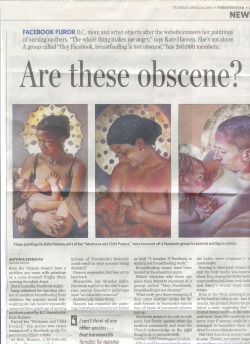
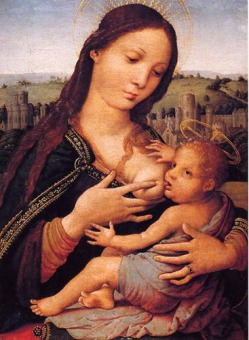
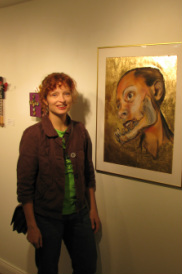

 RSS Feed
RSS Feed
